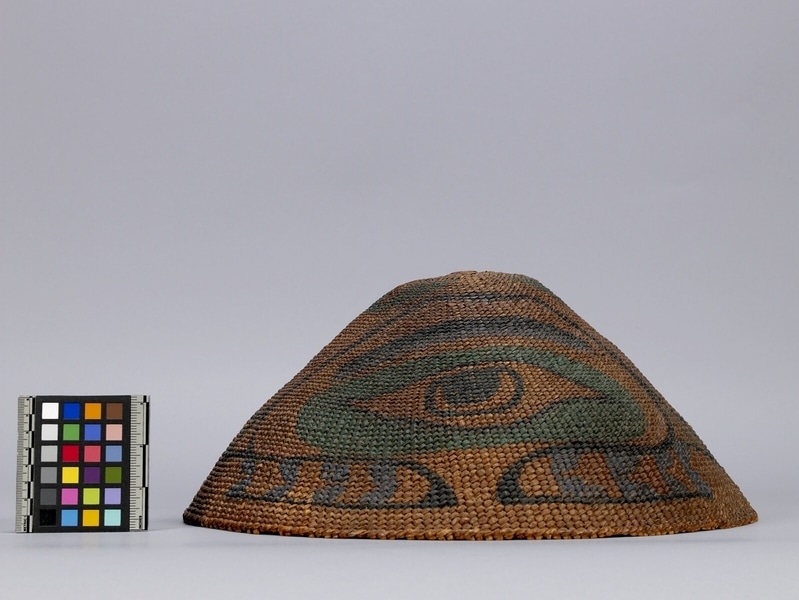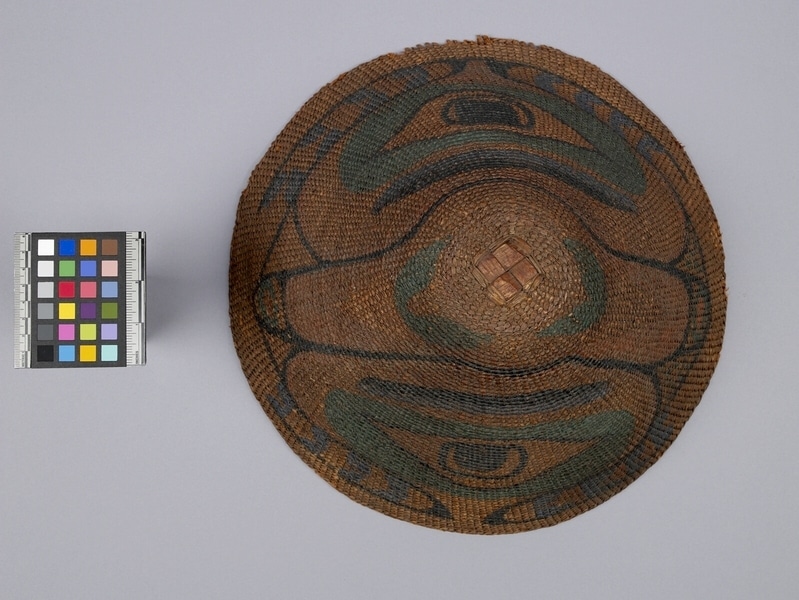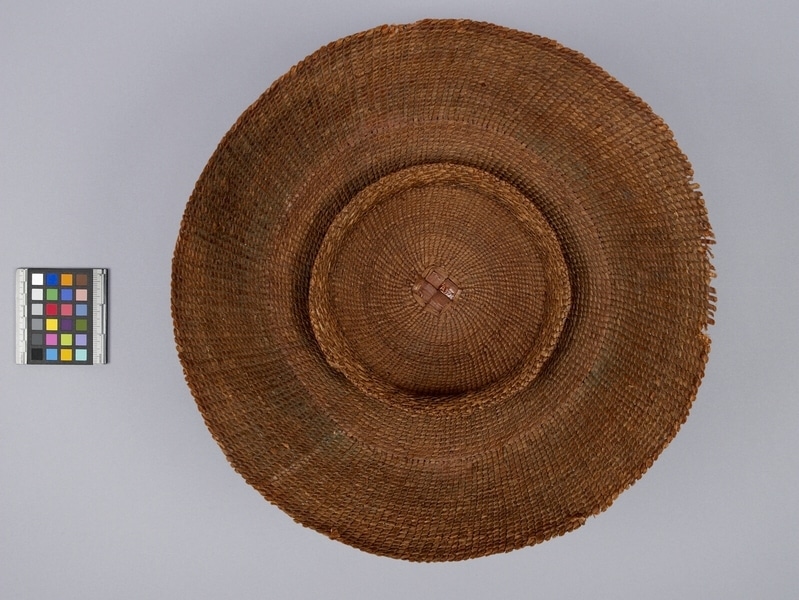Hat Item Number: A3723 from the MOA: University of British Columbia



Description
Dome shaped, double-woven, cedar bark hat with a design that is painted on. The hat has plaiting at the top which is outlined with double strand twining. The warps are then split and the twining becomes finer. A row of triple strand twining separates the top from the sides of the hat. The body of the hat is woven with double strand twining and features a painted design. The design is expansive; the main elements are two large eyes in black outlined in green with grey-blue under brow. The bottom rim of the hat has a row of triple strand twining. The hat liner is woven in a similar manner to the exterior hat, but not as finely. The liner does not extend to the full height of the hat, but stops just below the hat band which is twill woven (over two, under one).
History Of Use
Dome-shaped double woven hats, like this one, were worn as rain gear. A hat band inside the hat was used to fit the hat to the crown of the head, and to keep the sides of the hat away from the wearer's head - thereby creating an effective rain barrier.
Iconographic Meaning
According to collector records, the design represents a whale.
Cultural Context
rain hat; basketry
Specific Techniques
Two strand twining was the predominant method used for this hat. In two strand twining one weft (horizontal strand) passes over a warp (vertical strand) and under the next, while the a second strand passes under and then over the next warp. In this manner the wefts are always in opposition to each other. Three strand twining is also used minimally on the exterior. The pattern involved is over two warps, under one. The hat is double woven, which means that an inner and outer hat were woven and attached at their rims. The hat band was both done in twill weave. In this method the wefts pass over two warps, and under one - similar to three strand twining. The difference is that only one weft is used at a time, not three.
Item History
- Made in Vancouver Island, British Columbia, Canada before 1934
- Collected in British Columbia, Canada between 1893 and 1934
- Owned by George H. Raley before November 1948
- Received from H. R. MacMillan (Funding source) and George H. Raley (Seller) during November 1948
What
Who
- Culture
- Nuu-chah-nulth ?
- Previous Owner
- George H. Raley
- Received from
- H. R. MacMillan (Funding source) and George H. Raley (Seller)
Where
- Holding Institution
- MOA: University of British Columbia
- Made in
- Vancouver Island, British Columbia, Canada
- Collected in
- British Columbia, Canada
When
- Creation Date
- before 1934
- Collection Date
- between 1893 and 1934
- Ownership Date
- before November 1948
- Acquisition Date
- during November 1948
Other
- Item Classes
- basketry
- Condition
- fair
- Accession Number
- 1960/0410